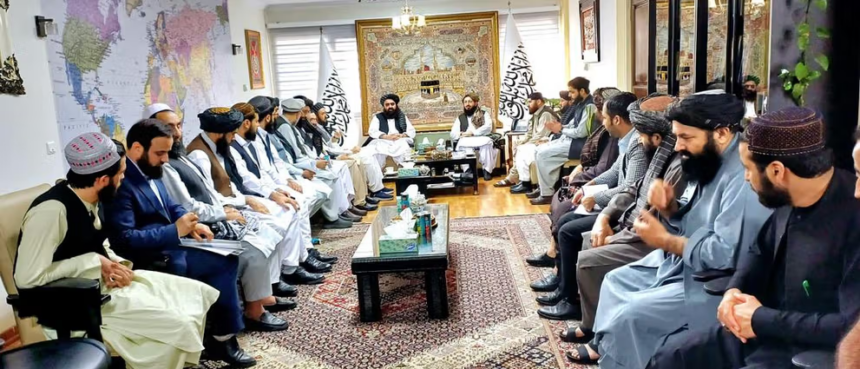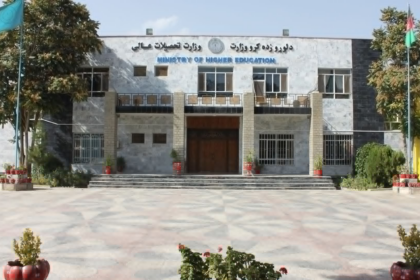RASC News Agency: In a visit that starkly highlighted the continuing erosion of Afghanistan’s national identity, Amir Khan Muttaqi, the self-styled acting foreign minister of the Taliban, recently toured the Afghanistan embassy in Tehran. Yet it was not diplomatic substance that captured attention but rather the chilling visual of two Taliban flags prominently installed on either side of the reception room. These stark white banners, long associated with militant extremism, were not symbols of a legitimate state they were flags of occupation, imposition, and ethnic exclusion. The visit was facilitated through a formal invitation from Iran’s Ministry of Foreign Affairs and included meetings with high-ranking Iranian officials, including President Masoud Pezeshkian and Foreign Minister Abbas Araghchi. However, in a telling diplomatic maneuver, the Taliban flag was nowhere to be seen during official state meetings. This quiet refusal by Iran to display the banner signaled an intentional distancing an acknowledgment that, while regional engagement with the Taliban may be unavoidable, full recognition remains diplomatically unacceptable.
This is far from an isolated case. Similar treatment was observed in earlier engagements between Taliban envoys and officials in Qatar and Oman, where the group’s controversial flag was conspicuously absent from official venues. These calculated absences send a clear message: despite limited, pragmatic interactions, the international community continues to withhold symbolic and formal recognition from a group that remains politically illegitimate and morally bankrupt. Since the Taliban’s violent military takeover of Kabul in 2021, the group has methodically dismantled every vestige of Afghanistan’s former republic. In place of the internationally recognized tricolor flag, the national anthem, and the country’s constitution, the Taliban have imposed their unilateral symbols of rule foremost among them, their white flag. This banner, rather than uniting the diverse peoples of Afghanistan, has come to represent a coercive ethno-political ideology rooted in Pashtun tribal supremacy and religious absolutism. To many Afghanistanis, it is not a flag of nationhood, but a symbol of betrayal.
Over three years into Taliban rule, not a single credible member of the international community has formally recognized the group as the legitimate government of Afghanistan. In this geopolitical context, the presence of Taliban flags at Afghanistan’s diplomatic missions abroad such as in Tehran is not a sign of sovereignty. Rather, it signifies the continued hijacking of Afghanistan’s institutions by an unelected, repressive faction whose rule has neither popular mandate nor international legitimacy. Political analysts contend that Muttaqi’s visit reflects a pattern of transactional diplomacy from regional powers a policy shaped more by immediate security concerns and refugee dynamics than by any endorsement of Taliban governance. These engagements remain carefully hedged, conditional, and devoid of symbolic validation. Even as Iran hosted the Taliban delegation, it withheld the symbols that might otherwise be interpreted as recognition.
This diplomatic choreography underscores the Taliban’s worsening isolation. Their efforts to cloak their regime in the trappings of statehood flags, titles, embassies stand in stark contrast to the brutal realities they have imposed on the ground: the persecution of minorities, the public flogging of women, the silencing of journalists, and the wholesale erasure of cultural and ethnic diversity from public life. The raising of the Taliban flag in Afghanistan’s embassy in Tehran should not be misunderstood as progress in foreign relations. It is, rather, a grim emblem of the Taliban’s continuing attempt to normalize an occupation one that seeks to replace the rich pluralism of Afghanistani identity with an austere, monolithic vision enforced through fear and violence.
As long as this flag flies over embassies once meant to represent all Afghanistanis, it will remain not a banner of unity, but a chilling reminder of the nation that was stolen and the silence that the world, for now, still refuses to dignify with recognition.






